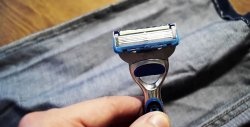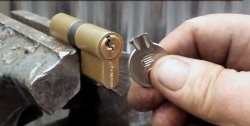
What you will need:
- old toothbrush;
- lighter or candle.
Plastic bucket repair process
The best solution for sealing a crack in a bucket or pot is to solder it. To do this, you need to clean the surface of the plastic around the crack from dirt.

After this, a toothbrush is taken and the edge of its handle is melted over a candle or lighter.


Molten plastic from the set fire handle will begin to flow down. Immediately after this, you need to put out the flame and wipe the crack with the melted handle.



Its viscous plastic will serve as an adhesive that will stick firmly to the bucket and seal it. The method works with almost all toothbrushes with rare exceptions.
After this repair, the bucket will no longer leak.













